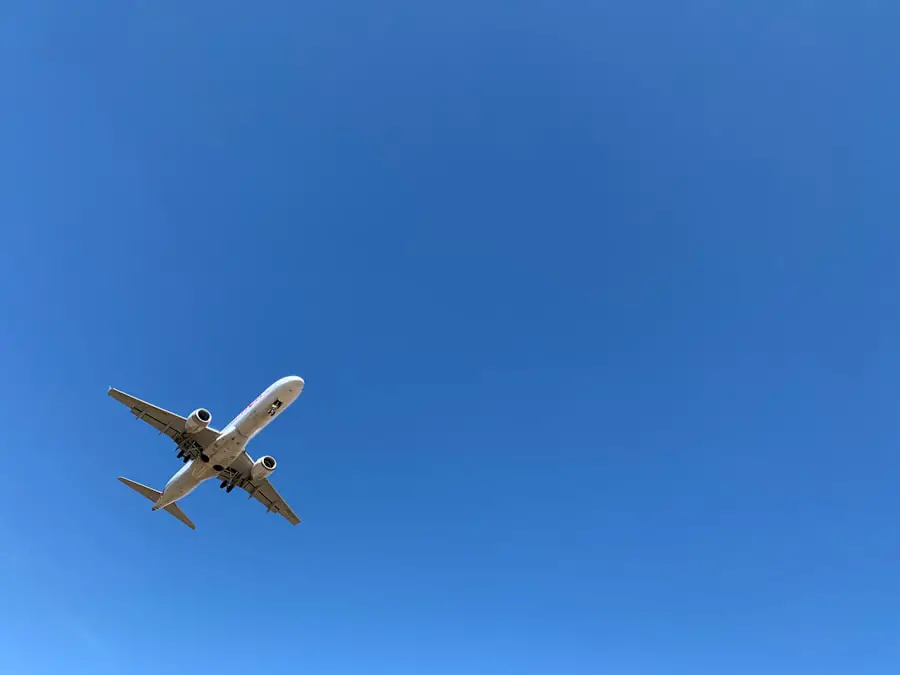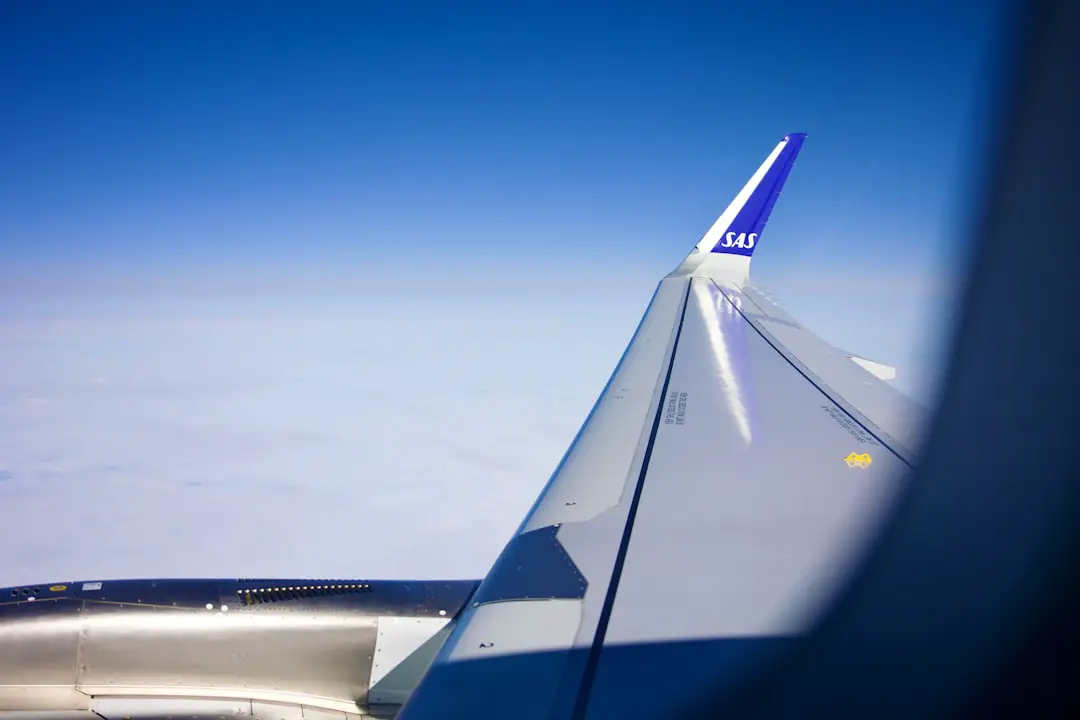SAS Airlines, officially known as Scandinavian Airlines System, is a prominent player in the aviation industry, particularly in Northern Europe. Established as a joint venture among three Scandinavian countries—Denmark, Norway, and Sweden—SAS has carved out a significant niche in both domestic and international air travel. The airline is recognized for its commitment to quality service, operational efficiency, and a strong focus on customer satisfaction.
With a rich history and a modern fleet, SAS continues to adapt to the evolving demands of the aviation market while maintaining its Scandinavian roots. The airline operates under the IATA code SK and is a founding member of the Star Alliance, which enhances its global reach and connectivity. SAS Airlines serves millions of passengers each year, offering a wide range of destinations across Europe, North America, and Asia.
The airline’s commitment to innovation and sustainability has positioned it as a forward-thinking entity in the competitive landscape of air travel. As travelers increasingly seek environmentally responsible options, SAS has taken significant steps to reduce its carbon footprint while providing high-quality service.
Key Takeaways
- SAS Airlines is a leading Scandinavian airline with a strong focus on sustainability and corporate responsibility.
- The airline has a rich history and background, with a diverse fleet and a wide range of destinations across Europe, Asia, and North America.
- SAS Airlines offers a premium onboard experience with a variety of services, including comfortable seating, in-flight entertainment, and delicious meals.
- The airline is committed to sustainability and corporate responsibility, with initiatives to reduce carbon emissions and support local communities.
- SAS Airlines has a loyalty program and partnerships with other airlines to provide added benefits and rewards for frequent flyers.
History and Background of SAS Airlines
The origins of SAS Airlines date back to 1946 when it was formed as a consortium of three national airlines: Det Danske Luftfartselskab (DDL) from Denmark, Svenska Lufttrafik AB (SLA) from Sweden, and Norwegian Air Lines (NAL) from Norway. This collaboration was born out of the necessity to create a more efficient air transport system in the post-World War II era. The airline’s first flight took off on September 17, 1946, connecting Stockholm to New York City, marking the beginning of its transatlantic operations.
Over the decades, SAS has undergone numerous transformations, including mergers and acquisitions that have shaped its current structure. In 1954, SAS became the first airline to operate jet aircraft on transatlantic routes, introducing the Douglas DC-8 into its fleet. This innovation not only revolutionized air travel but also set a precedent for other airlines to follow.
The airline continued to expand its network throughout the 20th century, establishing itself as a leader in international aviation. By the late 1990s, SAS had become synonymous with quality service and reliability, earning a loyal customer base across its operating regions.
Fleet and Destinations

SAS Airlines boasts a modern and diverse fleet that includes a mix of narrow-body and wide-body aircraft. The airline primarily operates Airbus A320 family aircraft for short-haul flights and Boeing 737 models for regional routes. For long-haul services, SAS utilizes advanced aircraft such as the Airbus A350 and Boeing 787 Dreamliner, which are known for their fuel efficiency and passenger comfort.
This strategic selection of aircraft allows SAS to optimize operational costs while providing a high-quality travel experience. In terms of destinations, SAS Airlines connects travelers to over 100 cities across Europe, North America, and Asia. Major hubs include Copenhagen Airport (CPH), Stockholm Arlanda Airport (ARN), and Oslo Gardermoen Airport (OSL).
The airline’s extensive network facilitates seamless connections for passengers traveling between Scandinavia and other global destinations. For instance, SAS offers direct flights from Copenhagen to New York City, Los Angeles, and Chicago, catering to both business and leisure travelers. Additionally, the airline has expanded its reach in recent years by introducing new routes to emerging markets in Asia and Africa.
Onboard Experience and Services
| Category | Metric | Value |
|---|---|---|
| Onboard Experience | Customer Satisfaction | 4.5 out of 5 |
| Onboard Experience | On-time Performance | 95% |
| Services | Food Quality | Excellent |
| Services | Entertainment Options | Over 100 |
SAS Airlines places a strong emphasis on providing an exceptional onboard experience for its passengers. The airline offers three distinct classes of service: SAS Business, SAS Plus (premium economy), and SAS Go (economy). Each class is designed to cater to different passenger needs, ensuring that travelers can choose an experience that aligns with their preferences and budget.
In SAS Business class, passengers enjoy spacious seating with lie-flat beds on long-haul flights, gourmet meals prepared by renowned chefs, and an extensive selection of entertainment options. The cabin crew is trained to provide personalized service, ensuring that every need is met during the flight. In SAS Plus, travelers benefit from additional legroom, priority boarding, and access to airport lounges, making it an attractive option for those seeking comfort without the full premium experience.
Meanwhile, SAS Go offers competitive pricing with essential services such as complimentary snacks and beverages on short-haul flights. SAS Airlines also recognizes the importance of technology in enhancing the travel experience. Passengers can access in-flight Wi-Fi on many flights, allowing them to stay connected while traveling.
The airline’s mobile app provides real-time updates on flight status, boarding gates, and baggage tracking, streamlining the travel process for passengers. Additionally, SAS has invested in modernizing its cabin interiors to create a more comfortable and aesthetically pleasing environment for travelers.
Sustainability and Corporate Responsibility
In recent years, sustainability has become a central focus for airlines worldwide, and SAS Airlines is no exception. The airline has implemented various initiatives aimed at reducing its environmental impact while promoting responsible travel practices. One of the key components of SAS’s sustainability strategy is its commitment to reducing carbon emissions per passenger kilometer by 25% by 2025 compared to 2005 levels.
To achieve this ambitious goal, SAS has invested in modernizing its fleet with more fuel-efficient aircraft that produce fewer emissions. The introduction of the Airbus A350 and Boeing 787 Dreamliner is part of this strategy, as these aircraft are designed with advanced aerodynamics and engines that significantly lower fuel consumption. Furthermore, SAS actively participates in carbon offset programs that allow passengers to contribute to environmental projects aimed at reducing greenhouse gas emissions.
Beyond fleet modernization, SAS Airlines promotes sustainable practices throughout its operations. The airline has implemented waste reduction initiatives on board its flights by minimizing single-use plastics and increasing recycling efforts. Additionally, SAS collaborates with various stakeholders in the aviation industry to develop sustainable aviation fuels (SAF), which have the potential to drastically reduce emissions when used in place of traditional jet fuel.
Loyalty Programs and Partnerships

SAS Airlines offers a robust loyalty program known as EuroBonus, which rewards frequent travelers with points that can be redeemed for flights, upgrades, and other travel-related benefits. EuroBonus members can earn points not only by flying with SAS but also through partnerships with hotels, car rental companies, and various retail brands. This extensive network allows members to accumulate points quickly and enjoy a range of rewards tailored to their travel preferences.
The program features multiple tiers—Basic, Silver, Gold, and Diamond—each offering increasing levels of benefits such as priority boarding, extra baggage allowance, and access to exclusive lounges. Gold and Diamond members enjoy additional perks like complimentary upgrades and dedicated customer service lines. This tiered structure incentivizes loyalty among frequent flyers while enhancing their overall travel experience.
Through this partnership with other leading airlines worldwide, members can earn and redeem points across a vast network of destinations. This collaboration not only enhances connectivity but also provides travelers with greater flexibility when planning their journeys.
Awards and Recognitions
SAS Airlines has received numerous awards and accolades over the years that reflect its commitment to excellence in service and operational efficiency.
For instance, Skytrax World Airline Awards have recognized SAS for its quality service in categories such as Best Airline in Scandinavia and Best Business Class in Northern Europe.In addition to customer service accolades, SAS has been acknowledged for its efforts in sustainability and corporate responsibility. The airline has received recognition for its initiatives aimed at reducing carbon emissions and promoting environmentally friendly practices within the aviation sector. These awards not only validate SAS’s commitment to sustainability but also position it as a leader among airlines striving for greener operations.
Moreover, SAS Airlines has been lauded for its innovative approach to technology integration within the travel experience. The airline’s mobile app has garnered praise for its user-friendly interface and comprehensive features that enhance passenger convenience. Such recognitions serve as a testament to SAS’s dedication to continuous improvement and adaptation in an ever-evolving industry.
Future Plans and Innovations
Looking ahead, SAS Airlines is poised for continued growth and innovation as it navigates the challenges of the post-pandemic aviation landscape. The airline is focused on expanding its route network while maintaining its commitment to sustainability. Future plans include introducing more direct flights to key destinations in Asia and North America as demand for international travel rebounds.
In addition to expanding its network, SAS is investing in technological advancements that enhance operational efficiency and improve customer experience. The airline is exploring the implementation of artificial intelligence (AI) solutions for better demand forecasting and resource allocation. By leveraging data analytics, SAS aims to optimize flight schedules and reduce operational costs while ensuring that passenger needs are met effectively.
Furthermore, SAS Airlines is committed to continuing its sustainability initiatives by exploring new avenues for reducing emissions through innovative technologies such as electric aircraft and sustainable aviation fuels (SAF). As part of this vision for a greener future, SAS is actively collaborating with industry partners to research and develop these technologies that could revolutionize air travel. Through these strategic initiatives focused on growth, innovation, and sustainability, SAS Airlines aims not only to enhance its competitive position within the aviation industry but also to contribute positively to global efforts toward environmental stewardship.
As it moves forward into an uncertain future shaped by changing consumer preferences and environmental challenges, SAS remains dedicated to delivering exceptional service while prioritizing responsible practices that benefit both passengers and the planet.
If you’re planning a trip with SAS Airlines, you may want to consider investing in a pair of odor-resistant Merino wool travel socks. These socks are not only comfortable for long flights but also help keep your feet fresh throughout your journey. For more travel gift ideas for her, check out this article here.
FAQs
What is SAS Airlines?
SAS Airlines, also known as Scandinavian Airlines, is the flag carrier of Denmark, Norway, and Sweden. It is the largest airline in Scandinavia and operates a large network of domestic and international flights.
When was SAS Airlines founded?
SAS Airlines was founded on August 1, 1946. It is one of the oldest and most established airlines in the world.
Where does SAS Airlines fly to?
SAS Airlines operates flights to over 123 destinations in Europe, Asia, and North America. Its main hubs are located in Copenhagen, Stockholm, and Oslo.
What type of aircraft does SAS Airlines operate?
SAS Airlines operates a fleet of modern Airbus and Boeing aircraft, including the Airbus A320, A330, and A350, as well as the Boeing 737 and 787.
Is SAS Airlines a member of any airline alliance?
Yes, SAS Airlines is a member of the Star Alliance, which is one of the largest and most prestigious airline alliances in the world. This allows passengers to enjoy seamless connectivity and benefits when traveling with other member airlines.
What amenities does SAS Airlines offer to its passengers?
SAS Airlines offers a range of amenities to its passengers, including complimentary meals and beverages on long-haul flights, in-flight entertainment, and Wi-Fi on select aircraft. Additionally, passengers can join the SAS EuroBonus loyalty program to earn and redeem points for various benefits.
